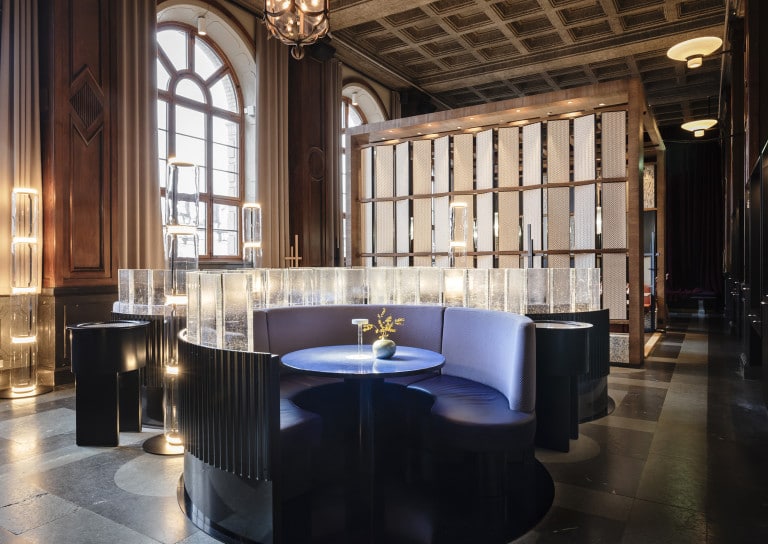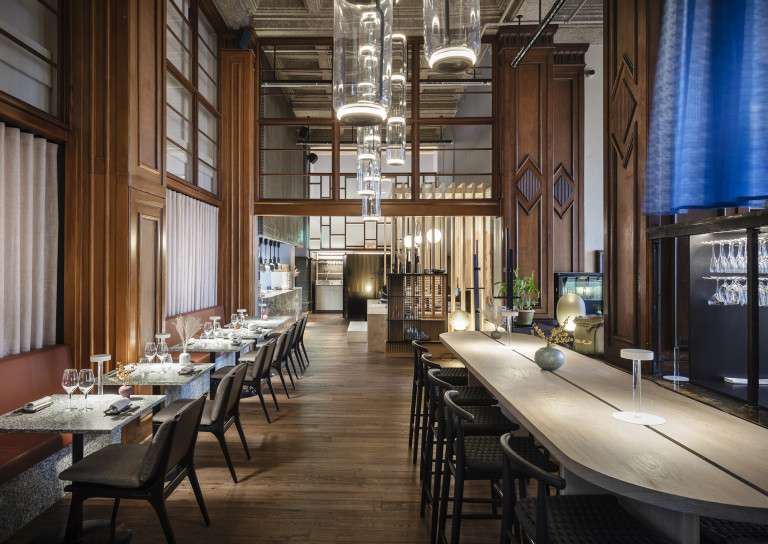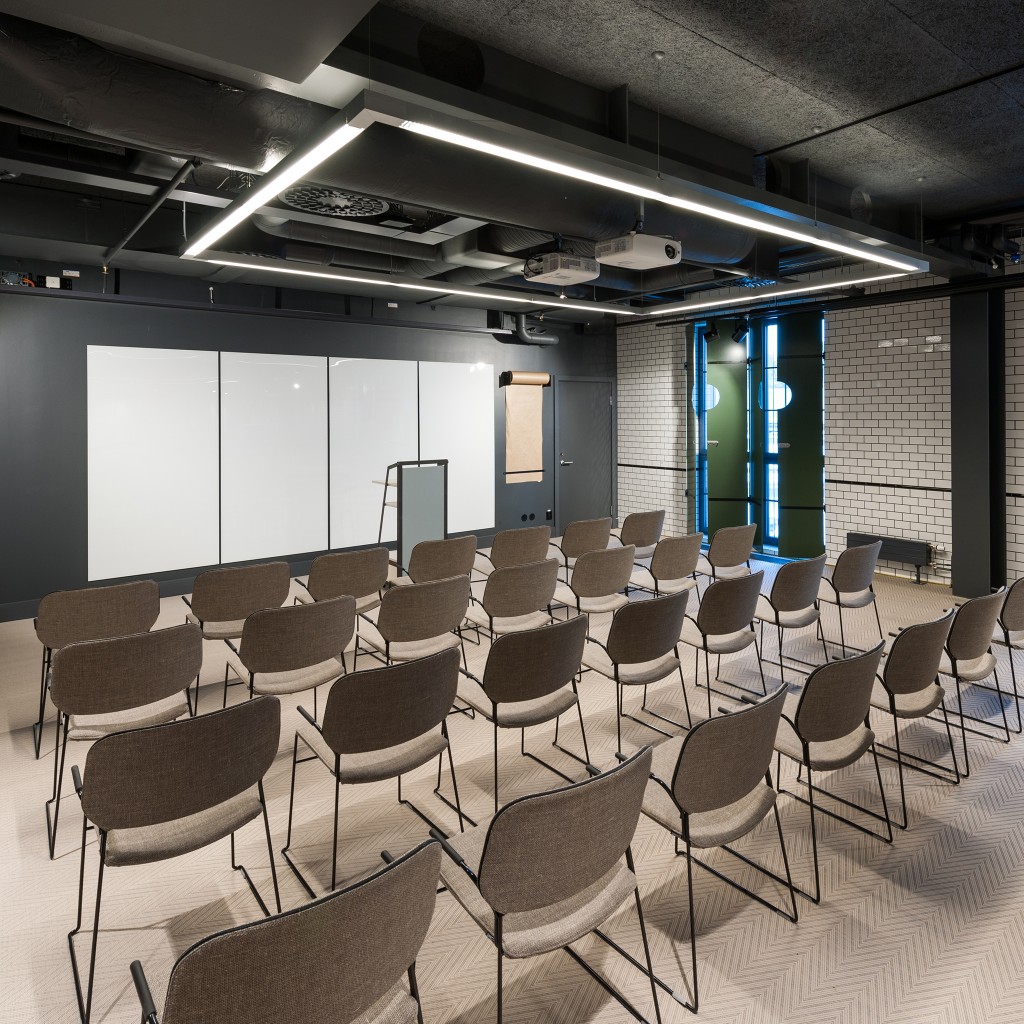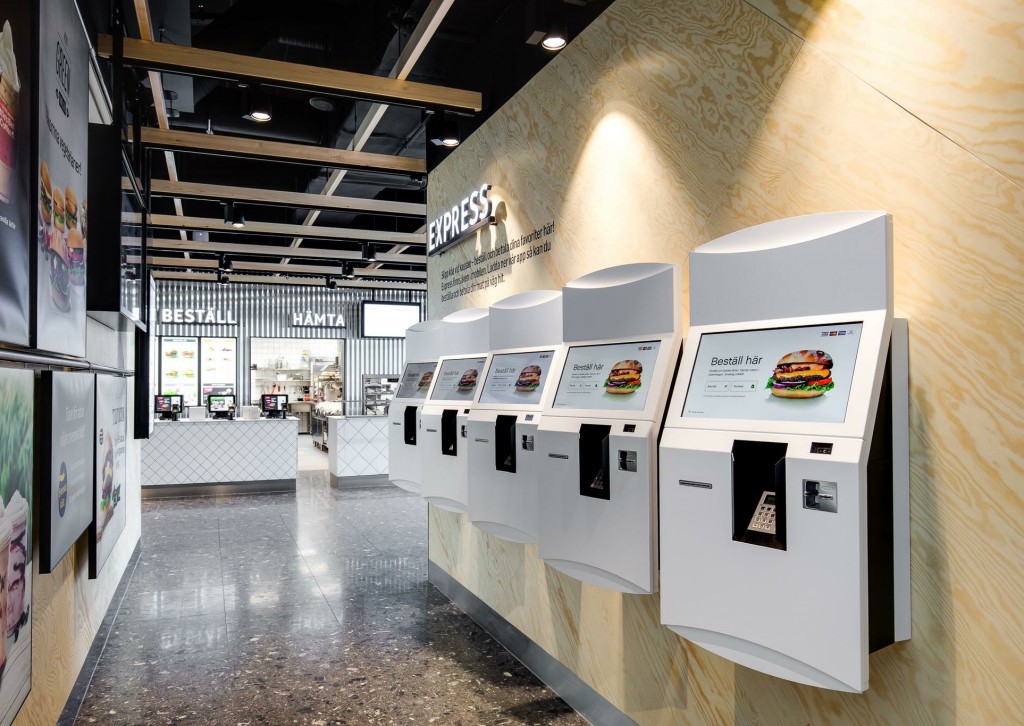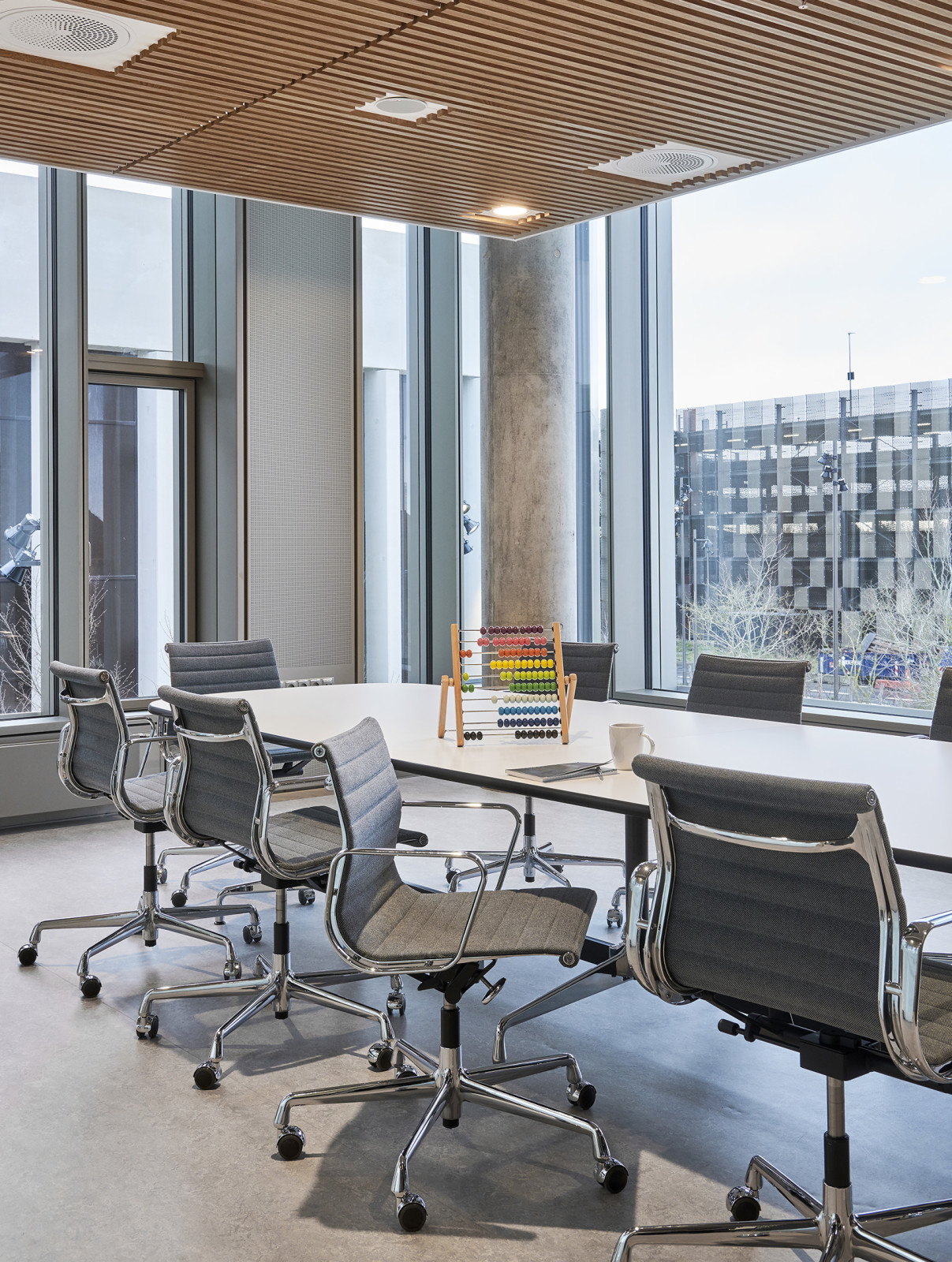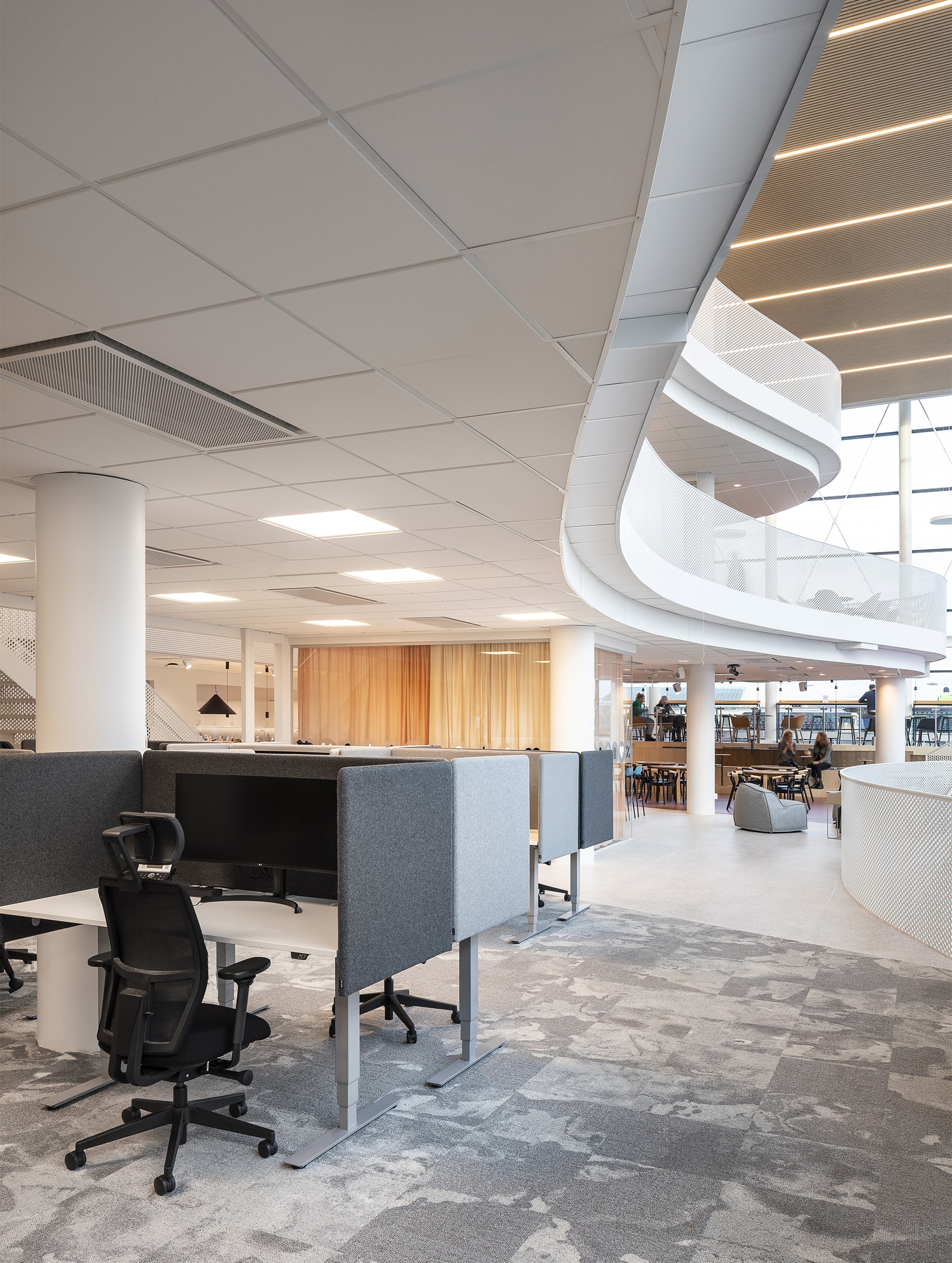Vrå

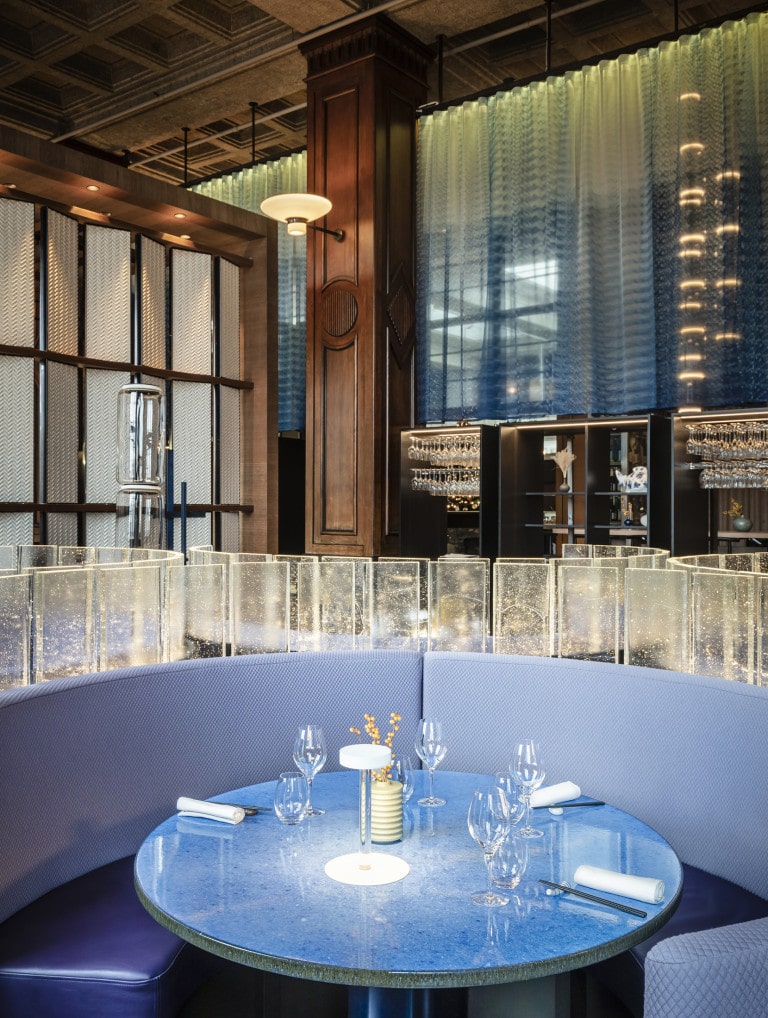
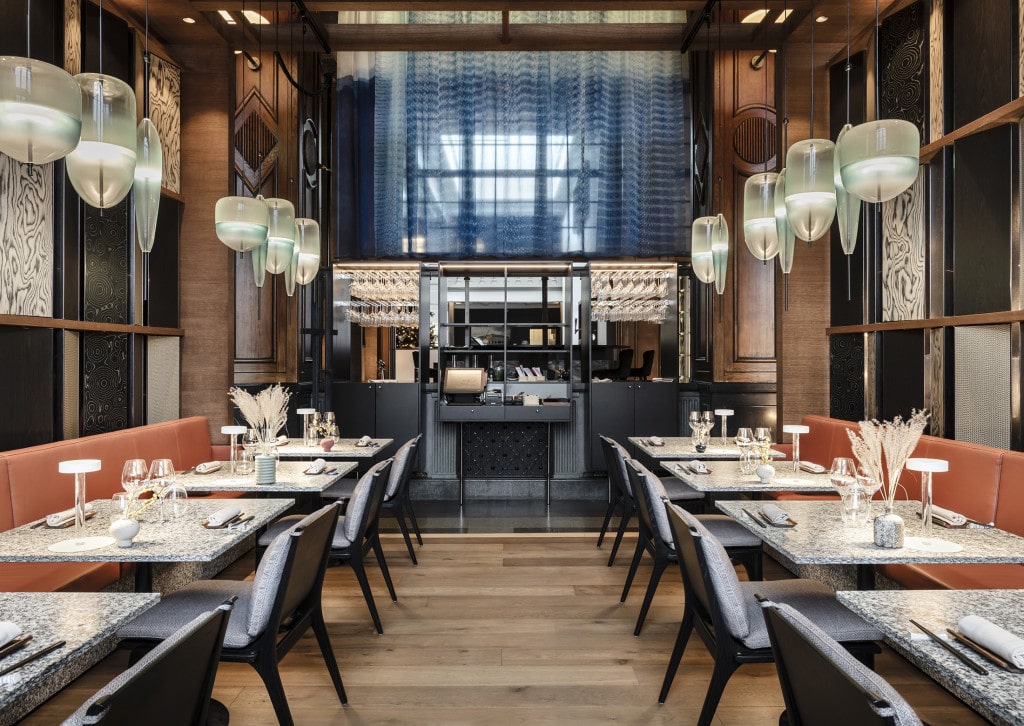
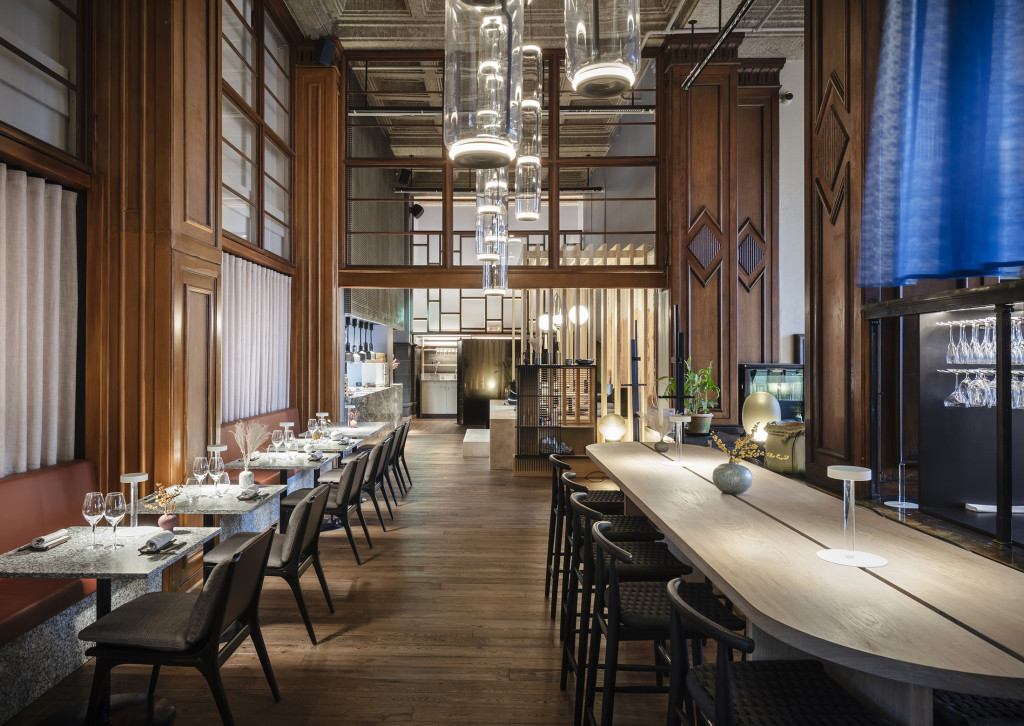
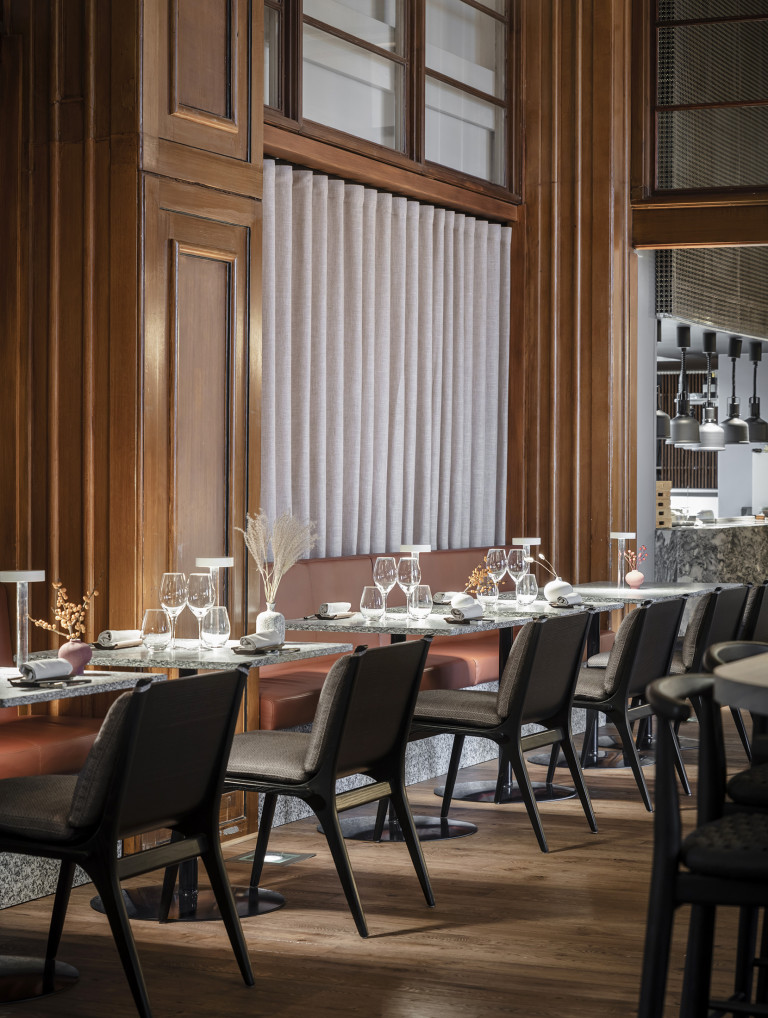

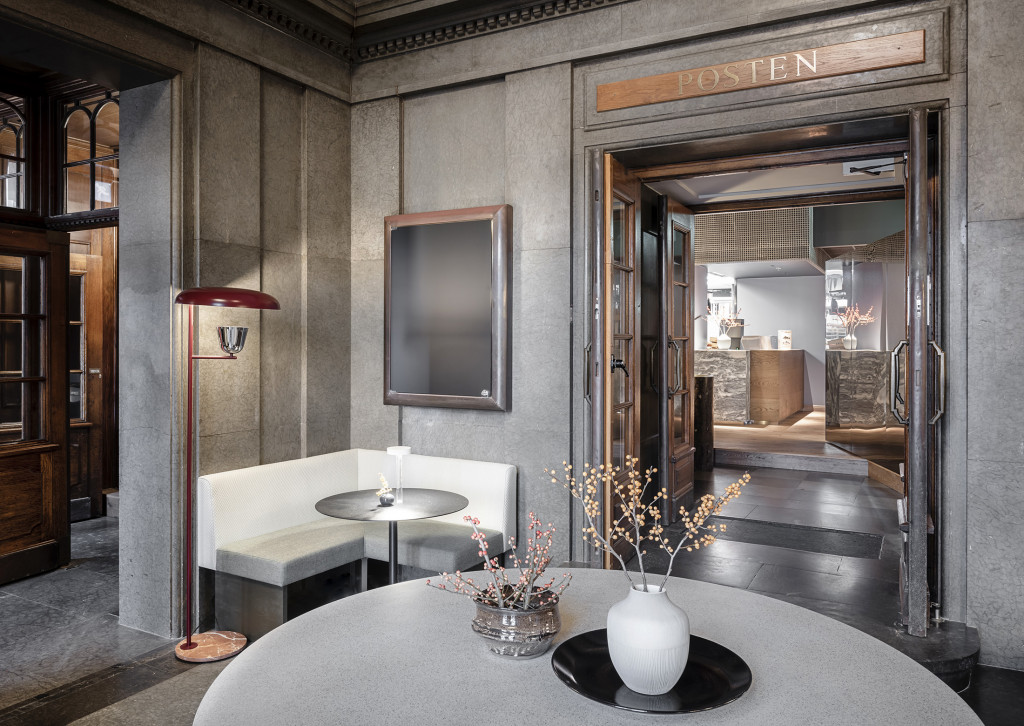
Diners at VRÅ can enjoy a mix of the best of the west coast and Japan in terms of both cuisine and interior design. United by a sustainable concept.
Hidden away in a small room at the back of the Clarion Post Hotel in Gothenburg, the restaurant VRÅ (meaning ‘nook or corner’ in Swedish) certainly lived up to its name. But after several years of critically acclaimed reviews it was time to step out of the corner and move up one floor to the large, attractive hall that was once the local post office for Gothenburg residents.
The new restaurant can seat up to 90 guests, to enjoy a seasonally focused menu. The ingredients are locally sourced, while the inspiration and preparation techniques are drawn from Japanese cuisine. VRÅ offers traditional Japanese seating, so-called horigotatsu, long tables, chambre separée and bar seating.
The restaurant has been designed by Semrén & Månsson, with Input interior responsible for construction project management and realising the interior design concept, which reflects the restaurant’s vision of being sustainable in every aspect. Genuine and sustainable materials have been used, harmonising with the fine basic workmanship of the venue. Interesting interior details worth pointing out include the partly recycled handmade decorative glass from Orrefors that frames and screens off the round tables and sofas in the restaurant and the local granite from Bohuslän, used, among other things, for the hand-washing ritual at the entrance.
One of the primary challenges with the restaurant, according to Sara Ewreskär, supervising architect from Semrén & Månsson, was retaining the intimate feel and sense of privacy long associated with VRÅ by visitors.
“We have worked on the spatiality in numerous different ways in order to retain the small-scale feel in a large space. The pergola, the round tables screened off by glass panels and large folding screens help to create rooms within a room.”
The Nordic and Japanese styles are related, and materials such as stone, glass and wood have served as cornerstones for the project. At the same time the fine, authentic backdrop of the building has provided a contrast to the Japanese-inspired elements, creating an interesting setting.
“As you approach the venue through the entrance from the street, the impression is that you are coming from a rough and busy alley in Tokyo, with a lot of metal and an open kitchen close by, to the Japanese seating. From here you go into the large dining room with grand windows, lots of oak and fine veneer. The textiles in shades of blue bring the west coast and the sea to mind.”
Beautiful premises, with a sense of history in the walls, provide a perfect setting for a restaurant and interior design aiming to make an impression on its guests, and create a challenge for those tasked with the remodelling work. Erik Lundqvist, Regional Manager at Input interior, describes the project as anything but a standard delivery.
“The old post office is a listed building, which means we couldn’t build or make any changes to the original structure by drilling the floor, walls or ceiling, for example. No easy task when large elements of the interior design have been specially ordered and custom-built. But together with Semrén & Månsson we devised creative solutions to get the interior in place. Despite tough restrictions the work proceeded smoothly thanks to a good relationship and dialogue between ourselves, the customer and the architect.”
